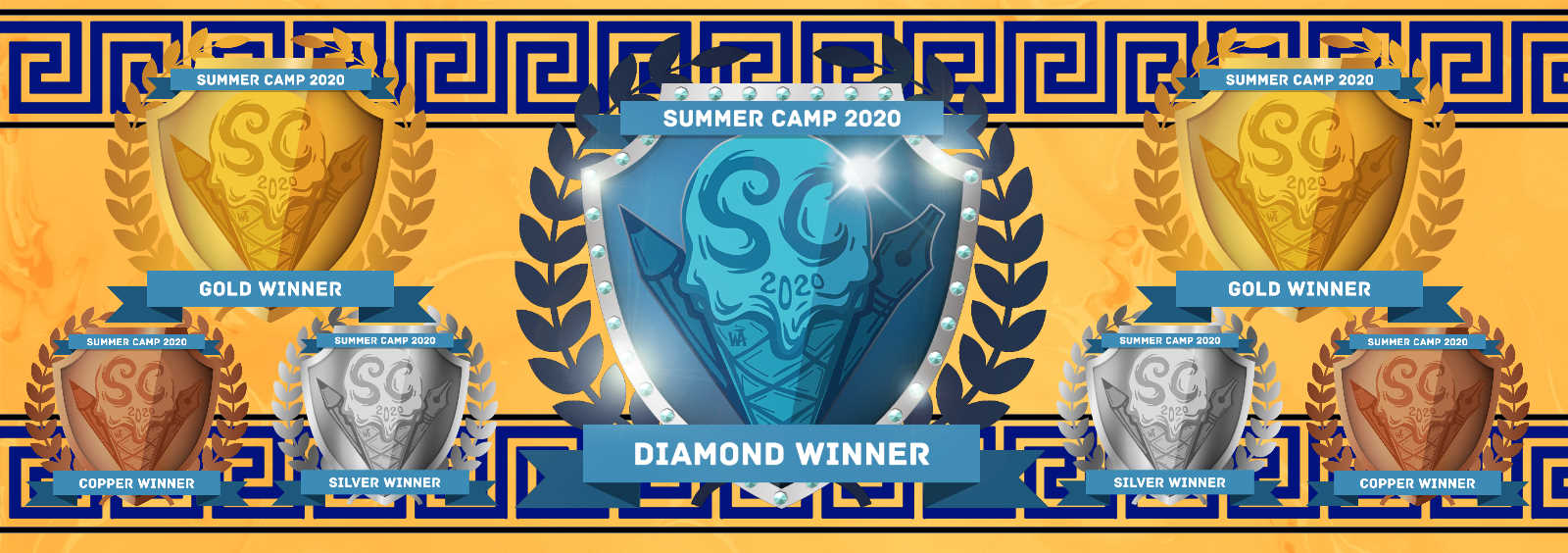Describe a valuable historical or ancient artifact in your world.— Item
"The Lame God Can Barely Stand"
Hephaestus
in his workshop,
surrounded by intricate craft,
can take no pleasure
in his work.
Not while his forge-scarred fingers
burn
from this latest delivery
from the hands of Messenger Iris,
from his wife-
(no, from his ex-wife now)
from his beautiful ex-wife,
the goddess of love,
the goddess of beauty,
the goddess of pleasure,
but not,
it seems,
the goddess of fidelity.
And also from him.
From him!
the god of ugly misshapen emotion,
the god of twisted unnatural combats,
and of whatever else she sees in him.
Ares!
Aphrodite!
Ares and Aphrodite!
The lame god can barely stand
to say their names.
The lame god can barely stand
to look into in his forge-scarred hands
at the wedding invitation.
"They'll want a gift,"
thinks Hephaestus,
Lord of the Forge,
and then he smiles,
and then he smirks,
and then he laughs
loud enough
to shake the foundations of his volcanic lair.
He was wrong.
He can take pleasure in his work,
after all.
The Necklace of Harmonia
A cursed fashion accessory with a long and terrible history.
The Poisoned Pendant
The necklace was forged by Hephaestus with marvelously intricate links connecting a string of sparkling green gemstones. He presented to his former wife, Aphrodite, to "celebrate" her remarriage to Ares.
Forging such a lavish gift may have seemed like a gesture of forgiveness from a jilted lover who had moved on with his life, but the necklace secretly held a curse for any mortal it touched.
The Legacy of Harmonia
Aphrodite and Ares regifted the necklace to their daughter, Harmonia, upon her marriage to Cadmus. It was thereafter known as the Necklace of Harmonia.
The newlyweds together founded the city of Thebes, established a dynasty, and passed the necklace on to a line of descendants who suffered an improbable string of tragedies.
A king and queen got turned into snakes.
A pregnant princess exploded.
A prince got turned into a stag.
A king got ripped apart by his own drunken relatives.
A queen married her own son.
Twins killed each other in battle.
And in Athens, an entire genre formed around plays, often set in Thebes, that reveled in these tragedies and more.
The Bribe of Eriphyle
Generations later, Eteocles and Polynieces, the twin sons of Oedipus, contested among themselves for control of Thebes. Eteocles won control of the city, but Polynieces escaped with the necklace.
In Argos, Polynieces gave the Necklace of Harmonia to Eriphyle as a bribe, so that she might convince her husband, Amphiaraus, to go to war against Eteocles.
The War of Seven Against Thebes ended with the deaths of Amphiarus and five of the other six invaders. The lone survivor trained a generation of the previous war's fatherless children to become Epigoni, the invaders who finally succeeded in wiping Thebes out. Eriphyle was then killed by her own son for her role in enabling the prior disastrous war.
The Flight of Alcmaeon
Alcmaeon, the son of Amphiaraus and Eriphyle, found himself haunted by the murder he'd committed against his own mother. He fled to seek redemption in the court of King Phegeus of Psophia.
Alcmaeon presented the king with the Necklace of Harmonia in order to win favor, but then attempted to steal the necklace back on the advice of an oracle.
Unsuccessful, Alcmaeon was executed by Phegeus's sons.
Spoils of War
From Psophia, the Necklace of Harmonia made its way to Delphi, and into the treasury of the Temple of Athena. But the necklace proved to be an anathema to the war goddess, who directed the forces of Phocis against Delphi in the Third Sacred War of 356 to 346 BCE. The Phocian tyrant Phayllus claimed the necklace as a gift for his mistress. She wore it proudly for a number of years, until her son went mad and set fire to their home, killing the family and destroying all of their possessions.
Last Seen in Cyprus
The Necklace of Harmonia, after causing many more misadventures, was taken by an unknown sufferer to the island of Cyprus, to the original Temple of Aphrodite, where it was rededicated to the Goddess of Love.
The 2nd Century CE travel writer, Pausanias, claims to have seen it hanging in the temple, safely out of human hands at last.
The current location of the necklace is unknown. But since the work of Hephaestus can never be destroyed, it's only a matter of time before the item and its curse resurface to cause another string of heartbreak and destruction.


Comments